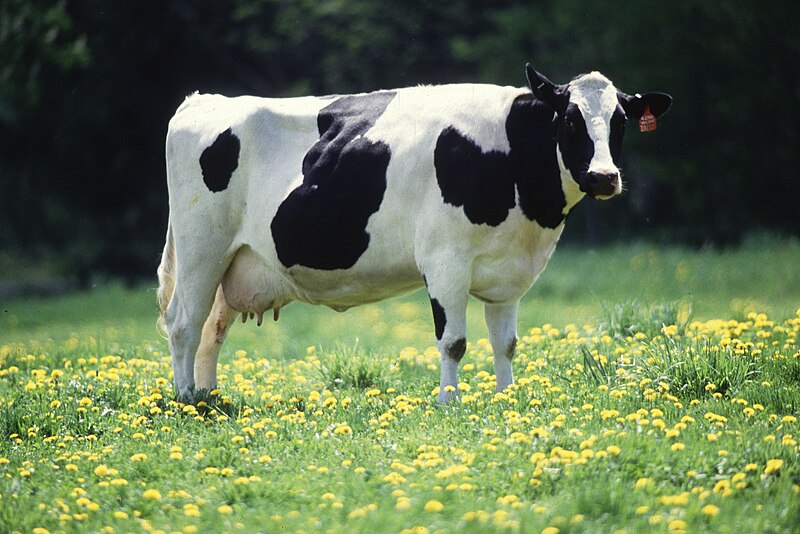Faịlụ:Cow female black white.jpg
Ọdịdị

Otu nyochaa a ha:800 × 534 piksels Ndị ọzọ mkpebi:320 × 214 piksels | 640 × 427 piksels | 1,024 × 684 piksels | 1,280 × 855 piksels | 2,700 × 1,803 piksels.
Failụ si na nke mbu (2,700 × 1,803 pixel, ívù akwukwo orunótu: 887 KB, MIME nke: image/jpeg)
Ịta nke usòrò
Bìri èhì/ogè k'ị hụ òtù ụ̀fa dị̀ m̀gbè ahụ̀.
| Èhì/Ogè | Mbọ-aka | Ógólógó na asaá | Òjìème | Nkwute | |
|---|---|---|---|---|---|
| dị ùgbu â | 03:31, 29 Ọgọọst 2023 |  | 2,700 × 1,803 (887 KB) | ReichLover1997 | Reverted to version as of 21:09, 24 May 2006 (UTC) |
| 00:42, 1 Septemba 2018 |  | 2,190 × 1,680 (725 KB) | Hohum | Cropped, colour adjust | |
| 21:09, 24 Mee 2006 |  | 2,700 × 1,803 (887 KB) | Siebrand | {{Information| |Description= {{nl|Een koe}} {{en|Because much of the cost of a cow is the feed and labor needed to maintain her, fewer but higher yielding cows mean lower priced milk. Dairy herd improvement ultimately benefits consumers. That's why it's j |
Ojiji faịlụ
Ihe ndị na-eso ihe eji Ihu akwụkwọ eme na faịlụ a:
Ejiji failụ zụrụ ọha
Wikis ndi a edeputara na eji kwa failụ a:
- Ihe eji na ace.wikipedia.org
- Ihe eji na ang.wikipedia.org
- Ihe eji na an.wikipedia.org
- Ihe eji na ar.wikipedia.org
- Ihe eji na ast.wikipedia.org
- Ihe eji na ast.wiktionary.org
- Ihe eji na az.wikipedia.org
- Ihe eji na az.wiktionary.org
- Ihe eji na ba.wikibooks.org
- Ihe eji na be.wikipedia.org
- Ihe eji na bew.wikipedia.org
- Ihe eji na bg.wikipedia.org
- Ihe eji na bjn.wikipedia.org
- Ihe eji na bn.wikipedia.org
- Ihe eji na bn.wikibooks.org
- Ihe eji na bs.wiktionary.org
- Ihe eji na ca.wikipedia.org
- Ihe eji na ca.wikibooks.org
- Ihe eji na ca.wikiquote.org
- Ihe eji na ca.wiktionary.org
- Ihe eji na ceb.wikipedia.org
- Ihe eji na chr.wikipedia.org
- Ihe eji na ckb.wikipedia.org
- Ihe eji na csb.wiktionary.org
- Ihe eji na cy.wikipedia.org
- Ihe eji na dag.wikipedia.org
- Ihe eji na da.wikipedia.org
- Ihe eji na da.wiktionary.org
- Ihe eji na de.wikipedia.org
Lee more global usage of this file.
